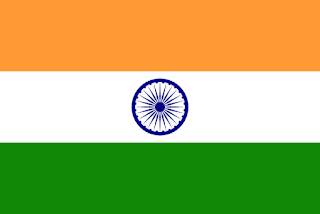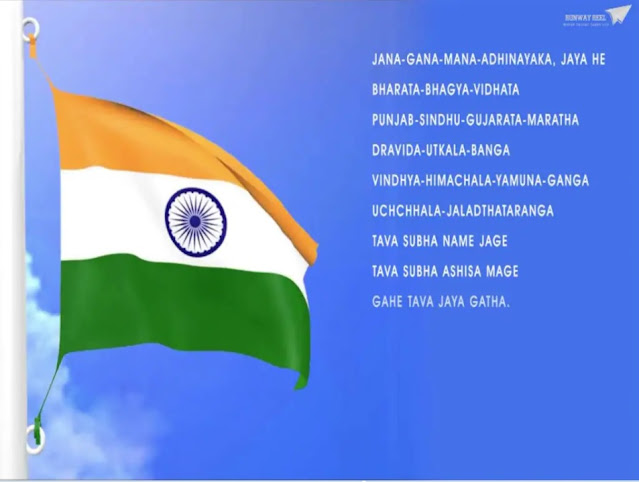National Flag:
- The national flag was adopted by the Constituent Assembly of India on July 22, 1947.
- A tricolor flag was first accepted by the Indian national congress in 1931, having Chakra in place of today's Chakra.
- It is a horizontal tricolor of deep Saffron at the top (stands for courage, sacrifice and renunciation), While at the middle (shows truth and purity in thoughts), dark green at the bottom (symbol of life abundance and prosperity).
- A wheel (Chakra) in the center of the white stripe is the symbol of progress and movement. it has 24 spokes.
- Supreme Court declared the right to hoist the flag as a Fundamental Right under Article 19 (i) (a) of the Constitution in 2002. Flag hoisting in India is regulated by the flag code of India, 2002.
- The Flag was designed by Pingali Venkayya and first time, the flag was hoisted by Sacchindra Prasad bose in 1906 in Calcutta and later on in the year 1907, another tricolor flag was unfurled by Madam Bhikaji Cama in Stuttgart.
- The first flag committee was headed by Dr. Rajendra Prasad.
National Emblem:
- National Emblem is adapted from the Sarnath Lion capital of Asoka on January 26, 1950.
- In this emblem, only three lions are visible, the fourth lion being hidden in the view. The wheel appears in relief in the center of the abacus with a bull on the right and a horse on the left. the bell-shaped lotus (as in the original) has been omitted. The other animals present in the emblem are An Elephant and a Lion.
- The words Satyameva Jayate are inscribed below the abacus in the Devanagari script. these words are taken from Mundaka Upanishad.
- A similar structure of the Sarnath Lion capital was also found in Thailand.
Image Source: https://uxdt.nic.in
National Anthem:
- The song Jana Gana Mana is the National Anthem of India, which was composed by Rabindra Nath Tagore in 1911, originally in Bengali.
- It was adopted by Constituent Assembly on January 24, 1950, in its Hindi version.
- The song Jana Gana mana was first published in January 1912 under the title "Bharat Vidhata' in Tattva Bodhini Patrika.
- The song was translated into English in 1919 with the title "Morning song of India".
- It was first sung at the Calcutta Session of Congress on December 27, 1911.
- The playing time of the full version of the National Anthem is 52 seconds while it is 20 seconds for the first and last lines of the stanza.
Image Source: newstracklive.com
National Song:
- "Vande Mataram" is the national song of India, which was composed by Bankim Chandra Chatterjee, originally in Sanskrit.
- It was adopted on January 24, 1950, providing it equal status with the National Anthem Jana Gana Mana.
- It is taken from his novel Anand Math published in 1882. its English translation was done by Sri Aurobindo.
- It was sung for the first time at the Congress Session of 1896.
National Calender:
- National Calendar is based on Saka Era (began in 78 A.D.) with Chaitra as its first month and Phalguna as its last month with a normal year of 365 days adopted from March 22, 1957, along with the Gregorian Calendar.
- Chaitra 1, falls on March 22 normally and on March 21 in a leap year.
National Animal:
- The Tiger (Panthera tiger) is the National Animal of India. It has a thick yellow coat of fur with dark stripes.
- The lion was the National Animal of India Till 1972. later on, it was replaced by Tiger.
Indian National Symbols
| National Symbol | Identity |
|---|---|
| National Bird | Peacock |
| National Flower | Lotus |
| National River | Ganga |
| National Tree | Banyan |
| National Aquatic Animal | Ganges River Dolphin |
| National Heritage Animal | Elephant |
| National Game (De-facto) | Hockey |
| National Flower | Lotus |





Post a Comment
Post a Comment